Fish Fight Part 1: Don’t pump your rod
The fighting style of Slow Pitch Jigging is also unique.
What I was used to doing like most anglers is to pump the rod. You lift up your rod and, while you bring it back down, you reel in. That’s what all anglers do to fight the fish all around the world. But with Slow Pitch Jigging, we don’t pump like that.
See the video of a man catching a 35kg Amberjack.
| Rod | Evergreen Poseidon Slow Jerker 603-4 |
|---|---|
| Reel | Shimano Ocea Jigger 2000NR-HG |
| Line | Berkley Fireline Tracer Braid PE2.0 (30lb) Seaguar FC #8 |
| Hook | Katsuichi Pike 2/0 |
| Jig | Deepliner Freq 300g |
This is Captain Higashiyama, one of the pioneering SPJ experts and the first SPJ jigs maker, Deepliner. His skill is widely and highly admired by Japanese anglers. He caught this fish with PE#2.0 30lb line!!! His Deepliner’s 300kg FREQ jig had 4 of 2/0 size hooks, and when the fish was landed, 3 of them were broken and the one that was hooking was extended. He was still able to pull that one out.
I’ve seen the other video of him catching a smaller Amberjack, probably about 10kg. His style is like Tai-chi. Holding the rod down, sometimes he sends down the rod into the water and brings it back up in a flowing motion, using the finest thuming control. He was letting the fish run and then bring the head around, letting the head shake and then bring it around, repeatedly. He was not fighting head-on, he was more like walking the fish and negotiating with the fish. Unfortunately I can’t find it on YouTube anymore.
Keep your rod down
So you keep your rod down, reel in steadily and calmly, let your reel drag do the job to release tensions. This is considered to be the fight with the lowest risks of unhooking the fish.
With Slow Pitch jigging, we use such light rods. The job of the rod is to dance the jig and hook the fish. From then on, it’s the reel’s job to land the fish. The role sharing is very clear.
Why don’t we pump?
Basic fact is, if you point your rod down, you can hold the weight with the more ease. It’s a simple physics.
The other problem with pumping is that it changes the tension to the line if you don’t do it correctly. It creates risk to unhook the fish. It also seems to let the fish fight back more. If you reel steadily and calmly, the fish lets itself follow. This is Sato Sensei’s teaching. “Don’t make the fish mad.” Fight with calm. And all SPJ experts testifies that this point-down fight style finishes a lot faster, with ease and without risks.
Fight like Tai-Chi
So bring the tip down, hang the fish, keep reeling steadily without changing the tension. If you need to pump, pump like Captain Higashiyama. We call it straight pumping.
Mr. Hirota of Seafloor Control is another leading SPJ expert. He sets his drag pretty tight, maybe a little over 5kg. When the fish runs out the drag, He follows it down and lets it run for a moment. Then he uses his thumb to stop the run and brings the head around. It’s like walking the fish in a circle. Not a tug of war in a straight line.
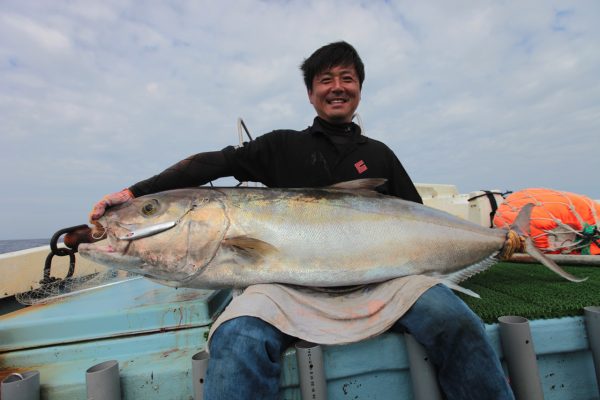
So it’s like Tai-Chi style in a flowing continuous round motions. Avoid head-on fight. Let’s the fish run when it wants to. Negotiate to stop and try to turn it’s head up. Keep reeling calm and stead.
This is how you fight with a big fish.
This is a video of my friend catching a 48kg Dogtooth Tuna this year.
| Date | April 29, 2013 |
|---|---|
| Field | 230m deep, Okinawa |
| Fish | 48.5kg Dogtooth Tuna |
| Fight Time | 23 minutes |
| Rod | Evergreen Poseidon Slow Jerker 603-6 |
| Reel | Shimano Torsa 16 |
| Line | Shimano Ocea EX8 PE2.0 Seaguar FXR fluoro leader #12 |
| Jig | Seafloor Control Gawky 300g Pearl White Glow |
Hope the information helps you! Good luck!
Tags In
Related Posts
18 Comments
Leave a Reply Cancel reply
Categories
- 1. SPJ (57)
- 1-1. Principles (9)
- 1-2. Techniques (11)
- 1-3. Setup (17)
- 1-4. FAQ (19)
- 1-5. Tackles (3)
- 1-6. Video Gallery (2)
- 2. Other Offshore Games (5)
- 3. Fishing Report (105)
- 3-1. Totos (25)
- 3-2. Readers (72)
- 4. Fish Cooking (19)
- 4-1. Iki-Jime (3)
- 4-2. The Art of Sashimi (5)
- 4-3. Recipe (7)
- 4-4. Seasoning (3)
- 5. Fishing Charter (6)
- Fish (12)

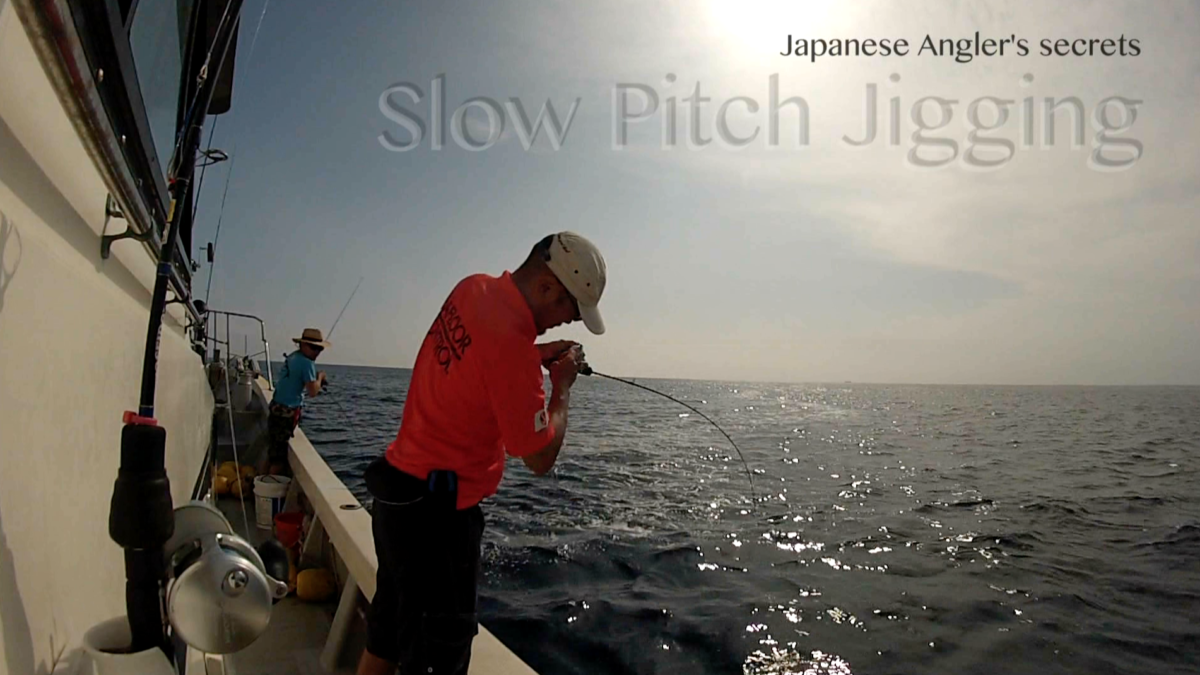


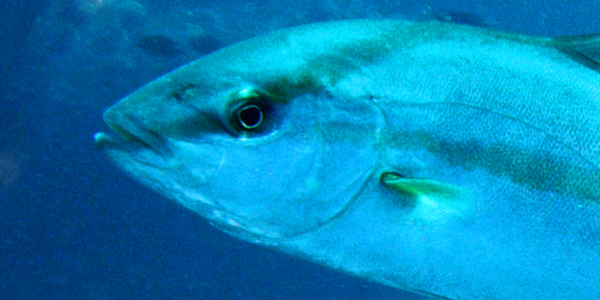
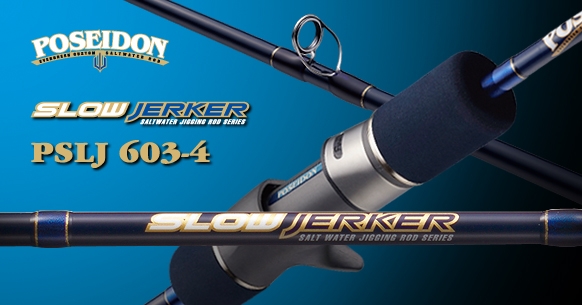
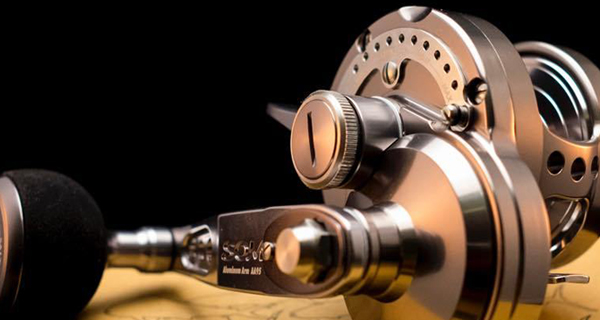
Wow, this is another mind blowing technique which I’ve learned from you. I used to pump my rod all the way fighting the fish ,but lately I just changed to more winding the reel and less pumping since it is less tiring and easy on my back.
Glad you liked the post KItidas. Sounds like you have already figured it out yourself. I think the spinning reel requires pumping and the use of rods flexibility though.
hi here totos!
just curious was watching a vid on youtube about papa otsuro jigging! he actually pumps the rod in a circular manner! Could u tell me why he does this?
http://www.youtube.com/watch?v=7znIvffkpd0 at about 10min-15min!
thks!
Hi Daniel,
Thank you for your question. Very interesting.
PaPa Otsuru is one of the pioneers in Japanese jig fishing. He became famous with his simple and definite instructions and his showy performance.
But he’s not doing Slow Pitch Jigging. He’s still doing the conventional hi-speed jigging with a heavy tackle as you can see in the video. It’s not right or wrong but he’s just in a different style.
He pumps his rod to pull up the fish. With a spinning reel, he has to. Spinning reel has its axis not in a right angle to the line like the conventional and requires the rotoring momentum to retrieve.
And he pumps in a circular motion as you point out. I’m not sure why he does that. My guess is that by doing it he’s trying to feel which way the fish is swimming to or any information about the fish actions and conditions. Because he’s pumping, he does not feel the fish while reeling. It’s only when he pulls up his rod that he feels the fish. By circling he might find a direction which is the easiest to pull up his rod to, and that is the direction the fishing is swimming to.
… I don’t know…
And from my point of view, I would not recommend to do this. First I don’t recommend to pump the light tackle for slow-pitch jigging for sure. And circling would create unnecessary traction and changes of tension to the fragile places like knots and hooks, which is so vital in a light setting of slow pitch jigging.
Hi
I am most grateful for such detailed presentation of slow pitch jerk. I have been enjoying light tackle for some time -finding it most productive actually in some times of year that fish are refusing anything at all.. I have also been using my rig -a combinastion of ultra light Sabiki with Kabura for sinker -and found it motivating the most difficult of fish and an answer for fishing cautious large Pagrus -similar to Madai. The problem is that dedicated rods do not exist in Greece so I use a cheap but of similar specifications 1.90 meters rod for shore jigging!!! I also fight fish with thumbing technique but with rod at 90 degrees -till now.. I will try the technique to its right moves and fighting style. I hope a Japanese angler friend who will come to visit me again in May might be able to help me with the tackle -though he is not much into this form of light tackle. Most ofg my center weighted jigs are of lamble bait (flat Haoli) but also have one or two of those you use -using them as Inchiku!!! and my line is a Duel hardcore PE 1.5 30 lb What would you think as leader for this set up?? I have Duel Fluoro #6 and #8 .. I also can have a Zenaq Whippy 63-4 Do you think it is ok for the technique?? I can not find the Nerf Winder V68 or V 72 that I think would be best…
Thank you again for such a presentation of the slow pitch jerk!!!
Andreas
Hi Andreas.
Thank you very much for your compliment and encouragement.
I’m really happy to see you using your creative imagination with your light tackle. That is the spirit of slow pitch jigging!
As for the leader, do you have any problem with your present leader? i normally recommend Seaguar FXR and Sunline Black Stream. FXR is firm and supple. Feels like it delivers direct control to the jig. Outstanding knot strength as well. Black Stream is very tough to frictions. Very dependable with fish that dive to the rocks.
If you tell me what you want to buy from Japan, I can do that and send it to your friend so that he can save you a great shipping fee. Let me know.
Cheers.
Hi Totos,
I would like to know around how much you keep your drag at strike? And during the fight?
Hi Athhar.
If you are using PE2.0, it is recommended to set the drag at 5kg max. It’s a standard procedure to stop the fish around the bottom with the max drag, and loosen the drag as you lift up the fish to avoid hooking off. But some people like to set the drag loose, and tighten after hooking the fish if necessary.
I usually set my drag tight, a little under 5kg. But when I get desperate for catching the fish, I reset my drag loose.
Hi Totos,
I have another question regarding drag setting on the reel. What I want to know is that when you set the drag to 5kg, do you do it with the reel mounted on the rod or not? And whether you actually lift the 5kg with the rod loaded up?
Thanks
I measured it recently. My drag is set at 4kg.
You can mount the reel or not. Just make sure that the reel is bearing all the weight. No guides are involved.
I don’t lift the weight to measure every time. Only sometimes. And I try to remember how 5kg feels with my hands. When I set it usually, I set it a little less than what I think is 5kg.
Hi Totos,
great blog, great information – thanks for sharing your knowledge.
what would be the drag setting on PE 1.5.
my set up is
Metal Witch 633B (rating PE 0.8 -2.0)
Daiwa Saltiga 15H
Line is JigMan WX8 PE 1.5 30lbs (tested to 16g)
fishing depth 30-80 meter
just one other question, why do you rate Metal Witch as class C rods.
Thanks!
Hi Roland.
It’s advisable to set it from 3kg to 5kg. Some anglers want to set it loose, and some tight. It depends on how you fight too.
Class C rod is produced outside Japan. And the material, the product design (not just cosmetic), the quality are not as good as Class B rods. It’s hard to explain, but if you compare in your hands, it’s very obvious.
Hi Totos,
Tnx for the great help regarding this interesting technique, I enjoy very much reading it. Since I am new to all of this, I have like a million questions. First thing would be about the rod. I am from Croatia and the depths there are from 40-100 m depending on the area.
Anyway, recently I bought Storm Kaiten rod PE 1-3 (max jig 160g) and Wiki jigging reel. What do you think about this set up? is it ok for the fish up to 10kg? Also using Varivas braid 20 lbs…
Is it enough to use the slow pitch jigs of 80g? Also planing on buying Storm Adajo, are these rods even considered for this technique? I am really not targeting for monsters, not yet 😉
Many tnx for your answer
Hi Valter.
Welcome to the world of jigging.
I really don’t know these rods. They are not slow pitch rods and they are not in Japanese market.
I will encourage you to go out there and try with the tackle you have! You don’t have to be so specific. Slow pitch principles are applicable to any style of vertical game.
I understand you don’t learn much only by reading, but get as much information as you can and go out there and try! Then you can come back to reading and try to figure out what went wrong and what you could have done. With your own field experience, reading can be more beneficial.
I know you have very limited access to these tackles. You don’t have other anglers to learn from. It must be difficult. That’s why I encourage you to build your own experience. You already have a tackle. I’m sorry that I don’t know these rods and can’t help you there. But before you buy the second one, I would go out with the tackle you have now. And try to figure out what I’m missing if at all.
Good luck!
Hi Totos,
This site really help me to understand more about slow jigging. I find slow pitch jigging very interesting. In my last trip, one of my friend lent me his slow jigging rods and teach me how to tai-chi jigging and i have more than 5 strikes.
To prepare for my next trip, i recently bought Kamikaze Xtreme Jigger RX3, i use PE 4 shimano Ocea Jigger 8braid 70lbs. But i have not buy the rod yet.
can you give me advice about :
1. Does PE 4 acceptable to slow jig at 60-120m depth? If not, what is your recommendation?
2. What is the best value rod to suit the setting? (With PE4 if it’s acceptable or with other PE number you recommend)
I live in Indonesia, and it’s not that hard to find japan product in here.
I’m glad that the website helps you learn slow pitch jigging.
Light line helps you stay more vertical. I would start with PE3 at least. You need contacts to learn.
Hope you can find anyone in class b rods locally. yamaga is very good.
Hi Toto San
I would like to ask, if the fight method like the movie.. Is it ok to the reel?
I mean, would it be broken after several times of fighting? Especially the main gear… I need some explanation Thanks a lot best regards
Hi Djoko.
Whether or not you use the cushion of the rod against impacts of the fish, the reel only bears what you set the drag for. The only concern would be those impacts, the instant of great force which is put on the reel before the drag performs. That is why we want smooth drag. And we also use our body movements to parry those impacts. As far as Ocea Jigger and other descent reels that slow pitch anglers use are concerned, I’ve never heard of any complaints that this style of fight is too hard on the reel.